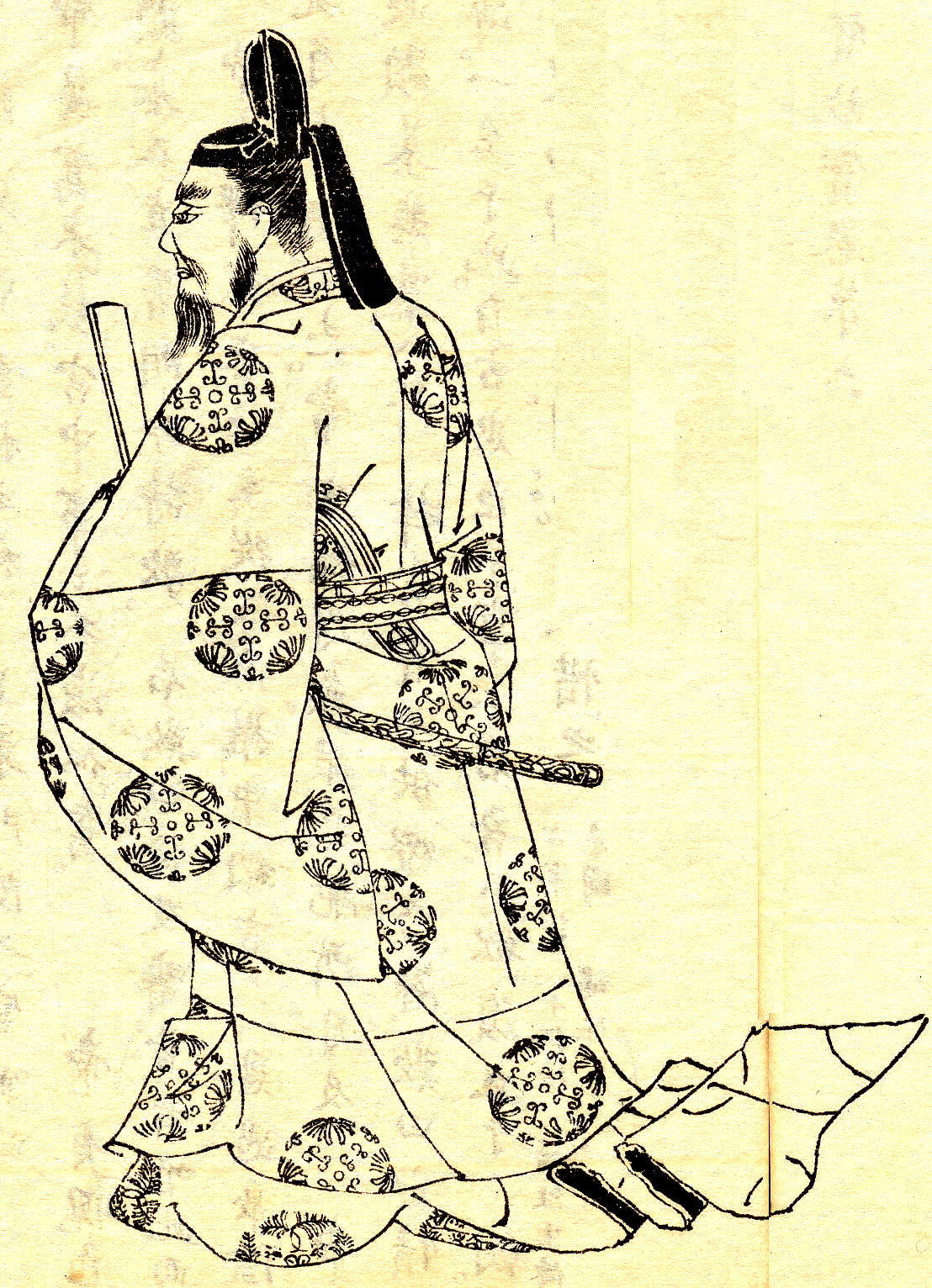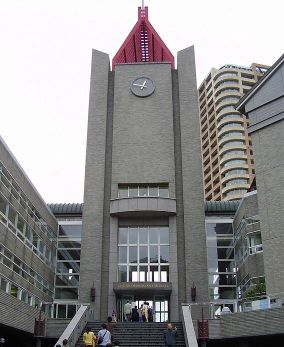|
┼īkagami
is a Japanese historical tale written around 1119 by an unknown author. It covers the period from 850 to 1025, the golden days of the Fujiwara family's rule. It is called a , along with the records of the '' Eiga Monogatari''. In the tale, the writer listens to a conversation mainly led by a 190-year-old man, , who recalls the past. A 180-year-old man, , adds comments and a young samurai puts questions to these two elders. This narrative strategy makes the story vivid and allows for the natural addition of various opinions and criticisms. The structure is modelled after traditional Chinese history books like the ''Records of the Grand Historian''. It consists of Preface, Stories of Emperors, Stories of Ministers, Miscellaneous Stories and Post-fin. This and three other tales with in their titlesŌĆö''Imakagami'', '' Mizukagami'', ''Masukagami''ŌĆöare collectively called the . Translations There are two translations into English: * ''The ┼īkagami: A Japanese Historical Tale'' ... [...More Info...] [...Related Items...] OR: [Wikipedia] [Google] [Baidu] |
Imakagami
The is a Japanese '' rekishi-monogatari'' ( historical tale) written in the late Heian period.''Britannica Kokusai Dai-hyakkajiten'' article "Imakagami". 2007. Britannica Japan Co.'' MyPedia'' article "Imakagami". 2007. Hitachi Systems & Services.''Digital Daijisen'' entry "Imakagami". Shogakukan. It is also called the or the . Date and authorship It has been speculated that the work was compiled in or shortly after 1170; Donald Keene, citing Isao Takehana, stated that the work was probably written between the eighth month of 1174 and the seventh month of 1175.Keene 1999 : 559, citing (566, note 28) Takehana 1984 : 620 (Vol. 3). The author is uncertain, but the most likely candidate is the ''waka'' poet .Keene 1999 : 559, citing (566, note 29) Takehana 1984 : 620-622 (Vol. 3) and Matsumura 1979 : 156-161. Structure and style The text is in ten volumes, and is told from the point of view of an elderly woman who is described as a granddaughter of , the narrator of the '' ┼īkagam ... [...More Info...] [...Related Items...] OR: [Wikipedia] [Google] [Baidu] |
Shiky┼Ź
The shiky┼Ź (, "four mirrors") are four Japanese histories in the genre from the late Heian period to the early Muromachi period The , also known as the , is a division of Japanese history running from approximately 1336 to 1573. The period marks the governance of the Muromachi or Ashikaga shogunate ( or ), which was officially established in 1338 by the first Muromachi .... They are also known as .Jeffrey P. Mass ''The Origins of Japan's Medieval World'' 1997 Page 441 "The "historical tale", for example, is typically represented by the "four mirrors" (''shiky┼Ź'') of history that begin to appear in the late Heian with the ┼īkagami and continue into the Muromachi. "Military tales" begin with accounts of the Hogen and ..." The four histories are: * * * * References Japanese chronicles Monogatari {{Japan-hist-stub ... [...More Info...] [...Related Items...] OR: [Wikipedia] [Google] [Baidu] |
Historical Tale
''Rekishi monogatari'' (µŁ┤ÕÅ▓ńē®Ķ¬×) is a category of Japanese literature defined as extended prose narrative. Structurally, the name is composed of the Japanese words ''rekishi'' (µŁ┤ÕÅ▓), meaning history, and ''monogatari'' (ńē®Ķ¬×), meaning tale or narrative. Because of this it is commonly translated as ŌĆśhistorical taleŌĆÖ. Although now categorised as works of fiction, Japanese readers before the nineteenth century traditionally accepted and read ''rekishi monogatari,'' as well as the related '' gunki monogatari'' and earlier '' Six National Histories'', as literal and chronological historical accounts. History Creation of ''monogatari'' ''Monogatari'' is categorised as Japanese extended prose literature, and is comparable to the epic novel. It first emerged in the late ''Heian period'', which held dominion from 749-1573 C.E. It is believed to have originated from the oral tradition of the court ladies at the time. This is supported through the language used in examples o ... [...More Info...] [...Related Items...] OR: [Wikipedia] [Google] [Baidu] |
Monogatari
is a Literary genre, literary form in traditional Japanese literature ŌĆō an extended prose narrative tale comparable to epic (genre), epic literature. ''Monogatari'' is closely tied to aspects of the oral tradition, and almost always relates a fictional or fictionalized story, even when retelling a historical event. Many of the great works of Japanese fiction, such as the ''Genji Monogatari'' and the ''Heike Monogatari'', are in the ''monogatari'' form. History The form was prominent around the 9th to 15th centuries, reaching a peak between the 10th and 13th centuries. ''Monogatari'' was the court literature during the Heian era and also persisted in the form of archaic fiction until the sixteenth century. The ''F┼½y┼Ź Wakash┼½'' (1271) indicates that at least 198 ''monogatari'' existed by the 13th century. Today, only 24 exist. Genres The genre is subdivided into multiple categories depending on their contents: ''Denki-monogatari'' Stories dealing with fantastical events ... [...More Info...] [...Related Items...] OR: [Wikipedia] [Google] [Baidu] |
Mizukagami
is a Japanese '' rekishi monogatari''. It is believed to have been written in the around the onset of the Kamakura period . It has been credited to Nakayama Tadachika or Minamoto Masayori, but the actual writer is unknown. It is the third book of the four mirror series. It deals with the oldest time-period, starting with the legendary Emperor Jimmu and ending with Emperor Ninmy┼Ź. It is told by a fictitious old woman who is visited by a bhikkhu while staying at Hase-dera. All the facts are taken from ca. 1150 by K┼Źen, the teacher of H┼Źnen. "Mizukagami" refers to the reflective pool in Japanese gardens in which can be seen such things as bridges and cherry blossoms in its reflection. See also * ''┼īkagami'' * ''Imakagami'' * ''Masukagami is a Japanese historical tale written in the early Muromachi period believed to be between 1368 and 1376. The author is not known but is believed to be Nij┼Ź Yoshimoto. It is the last of four works of mirror series and follows most rec ... [...More Info...] [...Related Items...] OR: [Wikipedia] [Google] [Baidu] |
Masukagami
is a Japanese historical tale written in the early Muromachi period believed to be between 1368 and 1376. The author is not known but is believed to be Nij┼Ź Yoshimoto. It is the last of four works of mirror series and follows most recent events. ''Masukagami'' is twenty chapters in total and follow events from 1180 to 1333 in accordance with the way Chinese classical historical tales were written. It starts with the accession of Emperor Go-Toba and ends with Emperor Go-Daigo's punishment of being deported to an island of Oki Province. The story is told through a fictitious hundred year old Buddhist nun of Seiry┼Ź-ji. See also * '' ┼īkagami'' * '' Imakagami'' * '' Mizukagami'' Notes References * Nussbaum, Louis Fr├®d├®ric and K├żthe Roth. (2005). ''Japan Encyclopedia.'' Cambridge: Harvard University Press Harvard University Press (HUP) is an academic publishing house established on January 13, 1913, as a division of Harvard University. It is a member of the Assoc ... [...More Info...] [...Related Items...] OR: [Wikipedia] [Google] [Baidu] |
Japanese Language
is the principal language of the Japonic languages, Japonic language family spoken by the Japanese people. It has around 123 million speakers, primarily in Japan, the only country where it is the national language, and within the Japanese diaspora worldwide. The Japonic family also includes the Ryukyuan languages and the variously classified Hachij┼Ź language. There have been many Classification of the Japonic languages, attempts to group the Japonic languages with other families such as Ainu languages, Ainu, Austronesian languages, Austronesian, Koreanic languages, Koreanic, and the now discredited Altaic languages, Altaic, but none of these proposals have gained any widespread acceptance. Little is known of the language's prehistory, or when it first appeared in Japan. Chinese documents from the 3rd century AD recorded a few Japanese words, but substantial Old Japanese texts did not appear until the 8th century. From the Heian period (794ŌĆō1185), extensive waves of Sino-Ja ... [...More Info...] [...Related Items...] OR: [Wikipedia] [Google] [Baidu] |
Helen McCullough
Helen Craig McCullough (February 17, 1918 ŌĆō April 6, 1998) was an American academic, translator and Japanologist. She is best known for her 1988 translation of ''The Tale of the Heike''. Early life McCullough was born in California. She graduated from the University of California, Berkeley in 1939 with a degree in political science. Early in World War II, she studied Japanese at the U.S. NavyŌĆÖs Language School in Boulder, Colorado. In 1950, she returned to Berkeley where she earned an MA and PhD. She married fellow Berkeley graduate student William H. McCullough.; (full viewCalisphere site/ref> Career McCullough was a scholar of classical Japanese poetry and prose. She was a lecturer at Stanford, where her husband William was on the faculty (1964-1969). In 1969, she and William both joined the Department of Oriental Languages at Berkeley, her alma mater, where she began as lecturer and later received tenure as Professor of Oriental Languages in 1975. Selected works McCull ... [...More Info...] [...Related Items...] OR: [Wikipedia] [Google] [Baidu] |
Heian Period In Literature , the Korean hanja transliteration of Õ╣│Õ«ē
{{disambiguation ...
The Japanese word Heian (Õ╣│Õ«ē, lit. "peace") may refer to: * Heian period, an era of Japanese history * Heian-ky┼Ź, the Heian-period capital of Japan that has become the present-day city of Kyoto * Heian series, a group of karate kata (forms) * Heian Shrine, a large shrine in the city of Kyoto * "Heian", a song from the 2016 Momus album '' Scobberlotchers'' See also * Ping'an (other), the Chinese pinyin transliteration of Õ╣│Õ«ē * Pyongan Pyongan Province (; ) was one of Eight Provinces of Korea during the Joseon dynasty. Pyongan was located in the northwest of Korea. The provincial capital was Pyongyang. History Pyongan Province was formed in 1413. Its name derived from the name ... [...More Info...] [...Related Items...] OR: [Wikipedia] [Google] [Baidu] |
Late Old Japanese Texts
Late or LATE may refer to: Everyday usage * Tardy, or late, not being on time * Late (or the late) may refer to a person who is dead Music * ''Late'' (The 77s album), 2000 * Late (Alvin Batiste album), 1993 * Late!, a pseudonym used by Dave Grohl on his '' Pocketwatch'' album * Late (rapper), an underground rapper from Wolverhampton * "Late", a song by Kanye West from ''Late Registration'' Other uses * Late (Tonga), an uninhabited volcanic island southwest of Vavau in the kingdom of Tonga * "Late" (''The Handmaid's Tale''), a television episode * LaTe, Oy Laivateollisuus Ab, a defunct shipbuilding company * Limbic-predominant age-related TDP-43 encephalopathy, a proposed form of dementia * Local-authority trading enterprise, a New Zealand business law * Local average treatment effect, a concept in econometrics * Late, a synonym for ''cooler'' in stellar classification See also * * * ''Lates'', a genus of fish in the lates perch family * Later (other) Later may ref ... [...More Info...] [...Related Items...] OR: [Wikipedia] [Google] [Baidu] |
Waseda University Library
The collections of Waseda University Library (µŚ®ń©▓ńö░Õż¦ÕŁ”Õø│µøĖķż©; ''Waseda Daigaku Toshokan'') form one of the largest libraries in Japan. Established in 1882, they currently hold some 5.6 million volumes and 46,000 serials. History The Waseda University Library (µŚ®ń©▓ńö░Õż¦ÕŁ”Õø│µøĖķż©; ''Waseda Daigaku Toshokan'') was originally established at the time of the founding of the university in 1882 (at that time called µØ▒õ║¼Õ░éķ¢ĆÕŁ”µĀĪ; ''Tokyo Senmon Gakkou''). Its current Central Library building was opened in 1991, commemorating the university's centennial. All together the university has 29 libraries: the Central Library, four Campus Libraries, and school libraries or reading rooms for students, attached to each school and institute. These libraries are said to hold 5.6 million books. The Waseda University Library also possesses a unique collection which survived the Bombing of Tokyo in World War II unlike many of its counterparts. It possesses some items which even ... [...More Info...] [...Related Items...] OR: [Wikipedia] [Google] [Baidu] |


